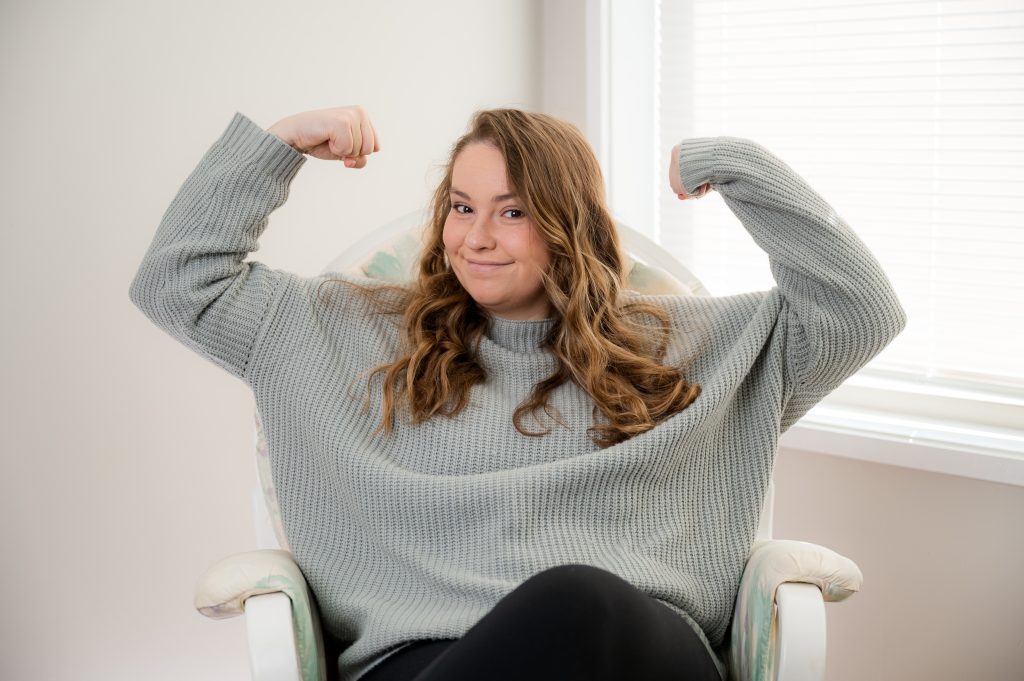Good morning, and welcome to The Work Of Becoming podcast where, today, I’m gonna talk about breathwork and the art of believing new things. So, I’m gonna tell you a story.
In November of 2022, I got a DM from a girl named Chelsea, and she said, “Hey, I was a former mentee of Naomi,” who is my current mentor, and she was like, “I actually live in an area near you.” She was also a business owner. She was a former therapist. So, we aligned on a bunch of things, and she was like, “I would love to connect.” And I had been looking for friends, and so, I was like, “Oh, my gosh. Yes!”
So, I connected with Chelsea. We became friends. We got coffee. We hung out and plotted our businesses. It’s been super, super fun. Chelsea, her handle is @chelseaconnors_ so you should go follow her on Instagram. Her and I overlap so much because she does have that sort of scientific background in terms of her previous experience as a therapist. She’s now in more of a coaching role. She loves the coaching space. Chelsea also very much is into breathwork. I’ll be honest, my only experience with breathwork has been heavily laced with skepticism because I’ve only ever seen the term breathwork used in the sort of very woo woo space.
So, when I’ve seen someone talk about breathwork, it’s like, “Oh, I went to Bali to a breathwork retreat, and then I made a million dollars overnight,” and it’s sort of this very Law of Attraction, manifestation, kind of woo woo stuff that I generally stay away from because I believe in evidence-based behavior change, at least in my business. I’m definitely a little woo woo on the personal side which I can talk about if you want to hear a podcast episode about that.
I thought breathwork was woo woo, but I started talking to Chelsea about it, and I said, “Chelsea, I know you’re an evidence-based person. You were a former therapist. You’re doing all this great work. This breathwork, is that a thing?” And she was like, “Yeah, it’s actually a thing.” And so, first, I tried it. So, I was really stressed out one night. I was trying to go to sleep. I had been laying there for, like, two and a half hours just grinding my teeth, and I really needed to just chill out. And so, I thought to myself, “Maybe I’ll try breathwork.”
So, I opened the meditation app that I have which is called Insight Timer (if you want to download it), and there’s a breathwork section of Insight Timer. And so, I did this short six-minute breathwork thing, and if you don’t know, breathwork is, essentially, breathing in intentional patterns in order to create a certain physical or psychological response. If you’ve ever seen people who are giving birth go, “Shh, whoo, shh, whoo,” that is breathwork, right? It’s intentional breathing. And so, I did this six-minute breathwork activity (there are all different kinds of breathing patterns that you could do), and I really felt it. I really felt better. I was like, “Wow, this is so interesting.”
So, of course, being the scientist I am, I went and looked it up, and I’m looking for peer-reviewed articles and looking for meta analyses and looking for things that kind of come from really reputable psychological publications that are very picky about what they support, and, lo and behold, there is a lot out there about the power of breathwork and how it can link to mindfulness and how it can be helpful and how it can be helpful in terms of reducing anxious feelings and grounding in the body, particularly for non-clinical populations. Non-clinical populations is a term for people who are not being clinically treated for psychological health in some way. That’s just where the research that I was looking for came from. That doesn’t mean it can’t be helpful if you are being treated for psychological health. It just means that I always look at non-clinical populations because I work with non-clinical populations. I’m not a clinician because I’m not a licensed therapist; I’m a coach.
So, all that is to say, there was something that I was very skeptical of that I decided to try even though it was new, even though I had some biases about it, even though I had some stereotypes going on, and I definitely think it’s a tool I’m adding to my toolbox. I’ve done it several times now, particularly in the morning when I wake up. It’s different than meditation because meditation makes me fall asleep but breathwork makes me feel more awake, and it’s really been quite a fun process to dive into breathwork and to learn from Chelsea and to kind of enter into this other behavior change tool that, quite frankly, I did not know existed.
And so, that is what I want to impress upon you in this podcast. That is what I want to talk to you about. What can you be more open to trying? What are you holding stereotypes or attitudes about? What are you telling yourself, “Oh, that would never work for me,” that you might be willing to try because it’s when we experiment, it is when we are willing to try new things and put ourselves in weird situations and really play around with our lives, that is when we’re able to engage in the process of change.



